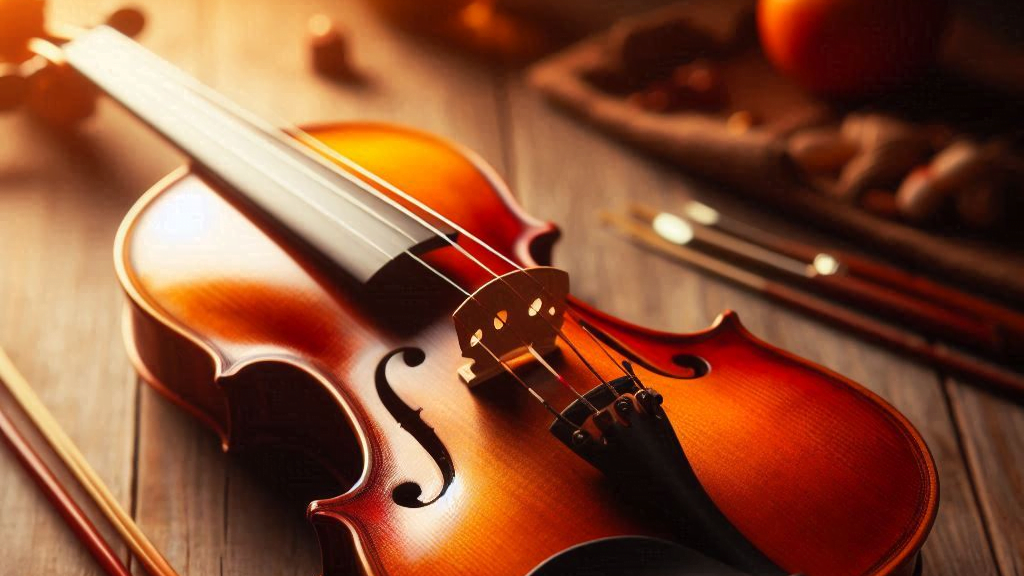As a beginner violinist, it’s easy to feel overwhelmed by all the moving parts—especially when it comes to the left hand. The left hand is responsible for shaping the notes, and many beginners feel like they’re constantly fighting to keep up, stumbling through fingerings and awkward hand positions. However, according to advanced violinists, there’s a key lesson: the left hand can become fluid, intuitive, and effortless. It’s not about thinking hard or applying force—it’s about refining sensitivity, reducing unnecessary movements, and trusting your body to guide you.
In this article, we’ll look at what masters of the violin emphasize about left-hand technique, debunk some myths, and help you unlearn the habits that might be holding you back.
Letting Go of the Need for Force
One of the biggest misconceptions beginners have is that playing the violin involves pressing hard on the strings with the left hand. In reality, advanced players emphasize that lightness is key. The violin is designed to respond to the slightest touch. Pressing too hard on the strings not only makes shifting and finger movement difficult but can also cause tension to build up in the hand, wrist, and arm.
Master violinists recommend thinking of your fingers as dancers that lightly tap the strings. It’s not about pressing the string down, but more about placing your fingers gently, allowing the bow and string to resonate. Over time, your hand will learn how much pressure is needed to create clean notes, but the guiding principle is: less is more.
Effortless Finger Sliding and Shifting
Shifting positions is one of the most daunting aspects of violin playing for beginners. But here’s what masters emphasize: the key to smooth shifts is not thinking too much about the mechanics. Shifting between positions is much like gliding—there’s no need to lift your fingers or move them abruptly.
Advanced players often compare the motion to the smoothness of sliding your hand across a polished surface. Your thumb and fingers should move together, almost as one unit. By avoiding unnecessary lifting of the fingers and minimizing any jerky movements, the shift becomes seamless and, over time, automatic. Keep your hand relaxed and allow the natural motion of the shift to carry your fingers into place.
A helpful tip from professionals: Practice shifting with just the lightest touch of your fingers on the string. This exercise allows you to experience the smoothness of the slide without any extra tension. When shifting, always aim for fluidity rather than precision. The precision will come naturally as your muscle memory develops.
Use of Minimal Finger Movement
One of the easiest ways to wear yourself out as a beginner is by moving too many fingers, or lifting them far higher than necessary. Master violinists understand that efficiency in movement is crucial. When playing a note, only the finger that is actively producing the sound should move, while the other fingers should remain relaxed and close to the strings. This reduces the time and effort needed to transition between notes.
Think of your fingers as hovering just above the strings, always ready to land when needed. Beginners often fall into the trap of lifting their fingers high off the fingerboard after playing a note, but in reality, your fingers should move only a millimeter or two away from the string. Keeping your fingers close conserves energy and makes faster, more accurate playing much easier.
Posture and Finger Placement: What’s Important
There’s a lot of conflicting advice when it comes to posture and finger placement, but master violinists tend to agree on a few key principles:
- Relaxation is everything.
Your left hand should be free of tension, especially in the wrist and thumb. If your thumb is gripping the neck of the violin tightly, you’ll struggle to move your fingers smoothly. Keep your thumb light and supportive, not gripping. - The fingers should fall naturally.
Advanced violinists often describe finger placement as allowing the fingers to fall or land onto the string, rather than placing them with force. Your finger shape should feel natural, like the curve of your hand when it’s relaxed. - Angle and position.
Many beginners worry about having the “correct” finger angle. Masters would say there is no single perfect angle—it’s about finding the most natural, relaxed position for your hand. As long as your fingers are coming down at an angle that produces a clean sound without excess force or tension, you’re on the right track.
Unlearning Common Myths About the Left Hand
Here are some beliefs that could be holding you back:
- “I need to press harder to get a clear sound.”
No, you don’t. Clear sound comes from the bow’s interaction with the strings, not from forceful pressing of the left-hand fingers. Over-pressing creates tension and inhibits smooth movement. Aim for light, controlled placement. - “I should lift my fingers after each note.”
Lifting too high wastes energy and slows you down. Instead, keep your fingers hovering just above the string, ready to land again. - “My hand needs to stay in one rigid position.”
Your left hand should be flexible, not fixed. Masters know that the hand should move with ease, shifting and adjusting as needed without clinging to one rigid form. - “Shifting positions is all about precision.”
Actually, shifting is more about smoothness and ease than precise calculations. It’s a dance, not a mechanical process. Trust your hand to slide where it needs to go, and precision will follow naturally.
Tips and Tricks from the Masters
- Practice slow finger lifts and placements.
One exercise advanced violinists recommend is practicing finger lifts as slowly as possible, focusing on how lightly you can press down and how little you can move your fingers. This builds muscle memory for light, efficient motion. - Sing the notes in your head before shifting.
Before making a shift, sing the pitch of the note you’re moving to. This mental connection makes your hand anticipate where it’s going, leading to smoother transitions. - Use scales to build precision with relaxation.
Scales are a master violinist’s secret weapon. But when you practice them, focus less on playing them quickly and more on keeping your hand relaxed, your movements small, and your shifts smooth. - Play with your eyes closed.
Once you’re comfortable with a passage, practice it with your eyes closed. This forces your body to rely on muscle memory and sensitivity rather than visual cues. Masters often stress that playing with your eyes closed enhances your connection to the instrument and builds a deep trust in your hands.
The Path to Fluidity
Mastering the left hand isn’t about doing more—it’s about doing less, with more awareness and refinement. By letting go of the myths around force, rigid posture, and overthinking, you can allow your hand to move freely and naturally. The truth is, much of what beginners struggle with is the unnecessary tension they bring into their playing.
Advanced violinists have learned to trust their hands, to move with lightness and fluidity, and to focus on economy of motion. They let their hands glide with the music, rather than forcing them into shapes or postures.
The journey to left-hand mastery is a process of unlearning what doesn’t serve you, trusting the music and the instrument, and allowing your fingers to dance lightly on the strings. Eventually, the left hand will move so smoothly that you won’t need to think about it—you’ll simply play. And one day, you may find yourself playing with your eyes closed, feeling the music flow effortlessly through your fingers.



